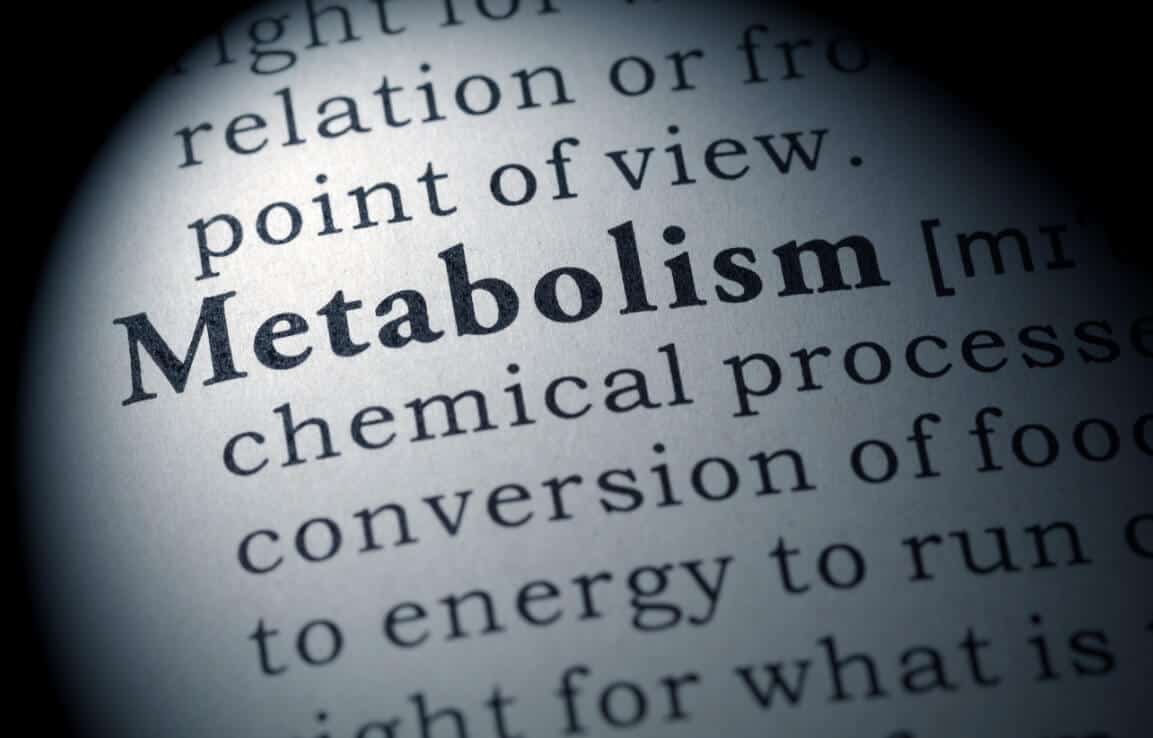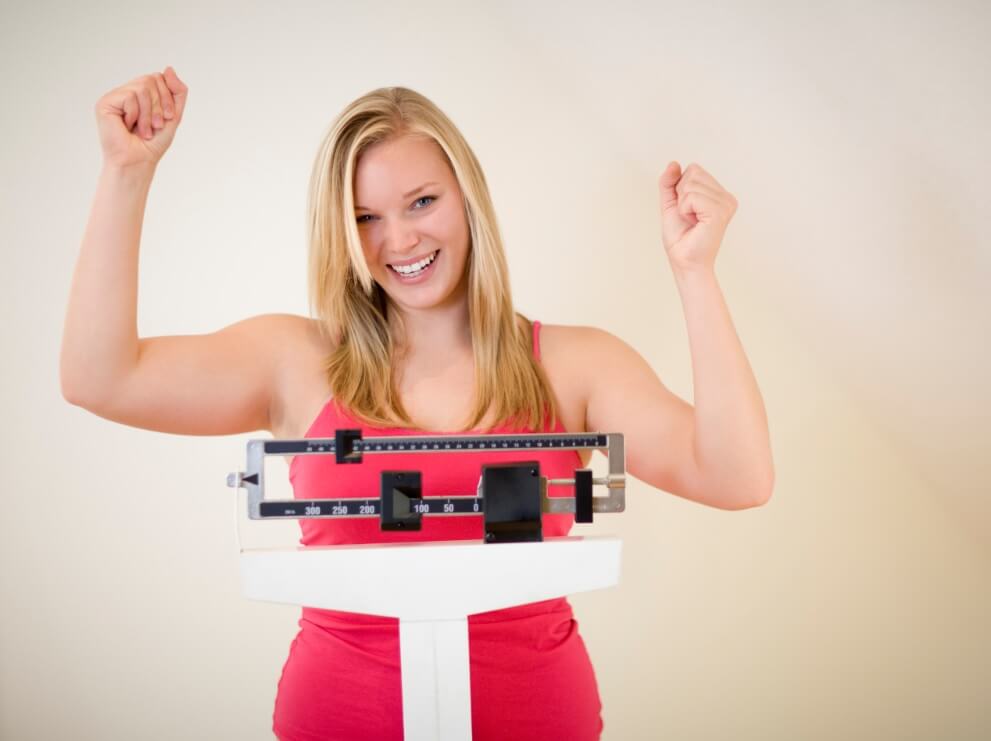Why does it seem like some people can scarf down whatever they want and still stay slim, while for others, even the smallest indulgence appears to send the scale upwards?
It all comes down to one thing: Metabolism.
A scientist might tell you that metabolism is the series of chemical reactions in a living organism that create and break down energy necessary for life. But in layman’s terms, it’s merely the rate at which your body converts food into energy—or burns calories.
Some of us have speedy metabolisms, and some of us have slower ones. Whatever your metabolic rate is, it can have an impact on your ability to reach or maintain your goal weight. (But it’s not the only thing that matters.)
Here’s a look at how it all works, and just how big of a role your metabolic rate plays in weight loss. Plus, the simple changes you can make to give your body’s calorie-burning capacity a boost.
When you make changes to your lifestyle, sometimes it can be hard to stay focused if things get hard. The virtual community from Noom and the long list of tools to keep you on track are both reasons to give this app a try.
How Does Metabolism Work?
Your metabolism is the rate at which your body burns calories. Your total daily energy expenditure—or the total number of calories you burn in a day—depends on three main factors.
For starters, your body uses up tons of energy every day to support all of your essential functions—from breathing, to growing and repairing cells, to signaling different hormones. This is called your basal metabolic rate, and it accounts for 60 to 75% of the calories you burn daily.
Even if you were to spend the entire day hanging out on the couch or lying in bed, your body would still burn these calories.
Then, there are the calories you burn while performing daily activities. Everything you do—from walking to your car, to doing the laundry, to digesting food—all require energy from calories. In general, these activities burn anywhere to 100 to 800 calories per day.
Finally, you also burn some calories from exercise. But how much depends on the length and intensity of your workout. For instance, running for an hour will burn more calories than walking briskly for 20 minutes.
Metabolism and Weight Loss
Your metabolic rate determines the amount of energy—or calories—your body burns through each day. And every metabolic rate is different. Having a slower metabolic rate might mean that you gain weight more quickly or that you have to work harder to slim down. And if you have a faster metabolic rate, you might have an easy time keeping excess weight off—or even struggle to put weight on.
What determines the speed of your metabolic rate?
Several different factors play a role:
Genetics
These are the traits passed down by your parents and grandparents. Whether they’re naturally lean, somewhere in the middle, or on the heavier side, there’s a good chance that you turned out the same way.
Body size
Larger people burn more energy than smaller folks, even when they aren’t exercising.
Body composition
Muscle tissue burns more calories than fat tissue. The more muscle mass you have, the higher your metabolic rate will be.
Gender
Since men tend to be larger and more muscular than women, they also tend to have faster metabolisms.
Age
According to the National Institutes of Health, metabolism starts to slow down as we get older. In large part, that’s due to declining muscle mass.
Unless you’re young and muscular and have great genes, this might make it seem like you’re doomed to struggle with your weight. But thankfully, that’s not the case.
Lifestyle habits like what you eat and how much you exercise can have a significant impact on the scale.
That means you can likely still achieve a healthy weight even if your metabolism leans towards the slower side—you might need to work a bit harder to get (and stay) there.
And the opposite is just as true: Even most people with naturally quicker metabolisms can’t eat whatever they want and expect to stay lean—especially as they get older.
Calculating Metabolic Rate for Weight Loss
Everyone’s metabolic rate is a little bit different, according to Medicine and Science in Sports and Exercise. Still, having a rough idea of how much energy your body spends daily can help you determine how many calories you need—and the cuts you need to make to lose weight.
So grab a calculator and let’s get started. You can determine your metabolic rate with this formula:
Men
9.99 x WEIGHT (in kilograms) + 6.25 x HEIGHT (in centimeters) – 4.92 x AGE + 5
Women
9.99 x WEIGHT (in kilograms) + 6.25 x HEIGHT (in centimeters) – 4.92 x AGE – 161.
Or, if looking at those numbers is enough to make your brain hurt, use an online calculator tool.
Tracking your progress is critical to the success of your weight-loss program. Noom helps by making tracking easy and convenient all in a small, amazing app.
How to Boost Metabolism
Eating right and exercising regularly are the two main tools that can help you achieve or maintain your goal weight.
But if you’re looking for an extra edge, you could try taking steps to boost your metabolism, according to the National Library of Medicine.
On their own, these actions might not amount to much. But when combined with a sensible diet and exercise routine, they can add up to more significant metabolic benefits.
1. Pump some iron.
Consider adding some resistance exercises to your workout routine to build more lean muscle tissue.
Remember, muscle burns more energy than fat—about three times more, experts estimate. So the more of it that you have, the faster your metabolic rate will be.
Don’t worry about trying to transform into a bodybuilder.
Aiming for two strength-training sessions per week is a great place to start.
2. Eat enough protein.
Aim to have a serving of lean protein—like 3-4 ounces of lean meat, a cup of plain Greek yogurt, or half a cup of beans—at each meal.
Protein is the building block of muscle, so getting enough can help maintain your body’s lean muscle tissue, especially when consumed after resistance training.
But that’s not all. Protein-rich foods also require slightly more energy for your body to digest compared to foods that are mostly carbohydrates or fat. That’s why research ties high-protein diets (around 30% protein) to more significant fat loss than high-carbohydrate diets.
3. Have more whole grains.
Reach for whole wheat bread or pasta, brown rice, or quinoa over the white stuff. Doing so could help your body torch nearly 100 more calories per day, according to a recent Tufts University study.
Why? Whole grains are rich in fiber, which the body expends lots of energy trying to digest. (It doesn’t succeed though because fiber is indigestible. In the end, it passes through your body without being absorbed.)
You’ll also find fiber in fruits and vegetables, beans and legumes, and nuts and seeds. Eat up!
4. Drink enough water.
When your body is dehydrated, all of its essential functions slow down. That includes your metabolic rate, which can drop by around 3%. But each time you drink, your metabolism gets a boost.
One Journal of Clinical Endocrinology and Metabolism study found that guzzling two cups of water temporarily boosted participants’ metabolisms by as much as 30%.
5. Fidget more.
Bouncing your leg or twiddling your thumbs doesn’t count as exercise, of course. But believe it or not, these little movements can add up to more calories burned over the day.
When Mayo Clinic researchers compared slim subjects to obese ones, they found that the slim ones burned around 350 more calories daily just from fidgeting.
6. Get enough sleep.
Skimping on snooze time doesn’t just leave you feeling crummy the next day. It could mess with your calorie burn.
Though the relationship between sleep and weight loss is complicated, research shows that sleep deprivation sets off a cascade of hormonal changes that can put the brakes on calorie burning.
The lesson? Aim to get 7 to 8 hours of shuteye per night.
Track your new lifestyle changes with an app like Noom so you stick with your plan to lose weight longer. The longer on the plan, the more weight you lose and the more apt you are to reach your goals.
The Bottom Line on Metabolism and Weight Loss
There are lots of factors that can affect your metabolic rate, and in turn, how easy (or difficult) it is for you to lose weight. Some of them—like age and genetics—can’t be changed. But there are still plenty of things you can do to boost your body’s calorie-burning ability—like increasing your lean muscle tissue, choosing the right foods, staying hydrated, and getting enough sleep.
Still, remember: The cornerstones of any weight-loss plan are eating less and moving more. By doing these things, you’ll burn more calories than you take in—which is the ultimate key to weight-loss success.
Metabolism and Weight Loss – How to Boost Metabolism Questions & Answers
- Recent:
Metabolism can play an important role in weight loss, but it’s not the only factor. Your metabolism is the process your body uses to convert food into energy, but other lifestyle factors such as diet, exercise and sleep quality can also influence how much you weigh. Eating a balanced diet and exercising regularly can help increase your metabolism and support healthy weight loss.

Marygrace Taylor is an award-winning health, wellness, and nutrition writer based in Philadelphia. She’s the co-author of Eat Clean, Stay Lean: The Diet and The Mediterranean Table. full bio





